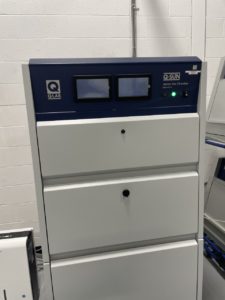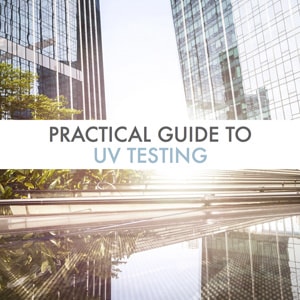ASTM C1442
Standard Practice For Conducting Tests On Sealants Using Artificial Weathering Apparatus
ASTM C1442 is offered by Micom as part of its UV testing services. ASTM C1442 – Standard Practice for Conducting Tests on Sealants Using Artificial Weathering Apparatus – covers three types of laboratory weathering exposure procedures for assessing the effect of actinic radiation, heat and moisture on sealants. In each type of artificial weathering devices, the exposures sources are the filtered xenon arc, fluorescent UV lamps and open flame carbon. These exposure sources are respectively based on Practices ASTM G155, ASTM G154 and ASTM G152.
Conducting tests on sealants using artificial weathering apparatus
 Throughout testing, the test sealant may be applied to a variety of types of substrates or tested as a free film depending on the properties to be evaluated following the exposure. Furthermore, it is recommended to exposure simultaneously a similar material of known performance under use conditions for evaluating the material’s performance relative to that of the control.
Throughout testing, the test sealant may be applied to a variety of types of substrates or tested as a free film depending on the properties to be evaluated following the exposure. Furthermore, it is recommended to exposure simultaneously a similar material of known performance under use conditions for evaluating the material’s performance relative to that of the control.
When conducting exposures in devices using laboratory light sources, it is necessary to consider how well the test conditions will reproduce property chances on the sealant being tested caused by end-use conditions. Indeed, the three procedures may not provide similar data since there is a difference in the spectral power distribution of the exposure sources. To learn more about this matter, please consult our latest UV Testing Guide eBook.
Typical experimental parameters for ASTM C1442
– Number of specimens/product: at least four specimens
| Xenon Arc Light apparatus | Fluorescent UV apparatus | Open Flame Carbon Arc apparatus | |
| Lamp filters | Daylight type filters | - | Daylight type filters |
| Lamp | - | UVA-340 | - |
| Irradiance level | Not less than 0,35 nor greater than 0,51 W/(m2nm) at 340 nm | 0,77 W/(m2nm) at 340 nm | - |
| Default exposure cycle | 102 min of light only (uninsulated black panel temperature: 70°C) Followed by a wet period of 18 min light with wetting either by water spray (21 ± 5°C) or immersion in water. | For specimens that are less than 20 mm thick: 8h UV (uninsulated black panel temperature: 60°C) followed by 4h wetting by condensation (uninsulated black panel temperature: 50°C) For specimens that are more than 20 mm thick: 5h UV only (uninsulated black panel temperature: 60°C) Followed by 1h UV plus wetting by water spray (less than 40 oC) on the front surface. | 102 min light only (uninsulated black panel temperature: 70°C) Followed by wet period of 18 min light plus water spray (21 ± 5°C) on the front |
| Chamber air temperature | 48°C | - | 48°C |
| Relative humidity | 50 % during the dry period of exposure to light | - | 50 % during the dry period of exposure to light |
Should you need guidance in deciding which procedure or test conditions should be used for your specific need, please feel free to contact us.
Practical UV Testing Guide
Sunlight exposure can have harmful impacts on carbon-based
materials such as coatings, polymers, textiles, and many others.
Learn more about our in-laboratory UV testing process in this guide.


